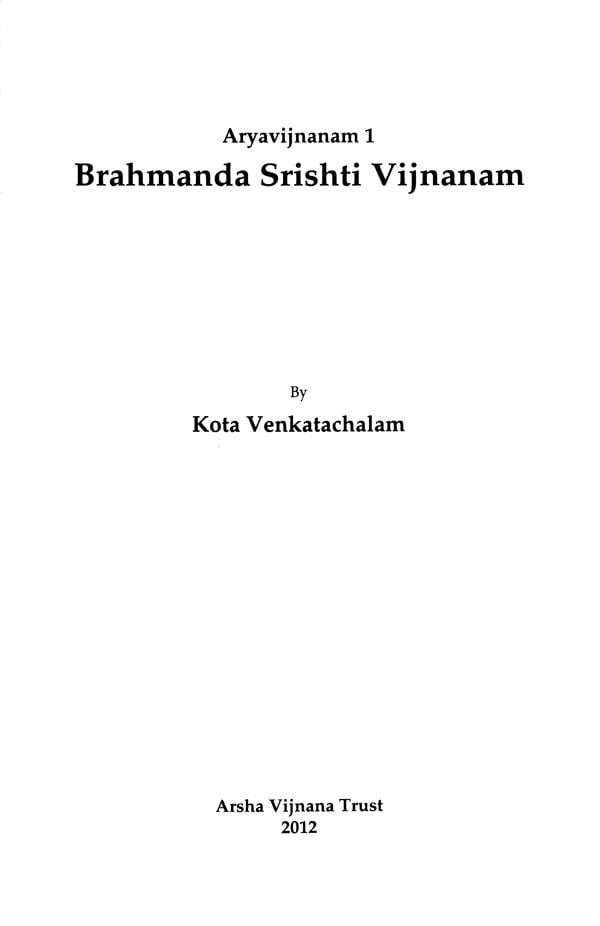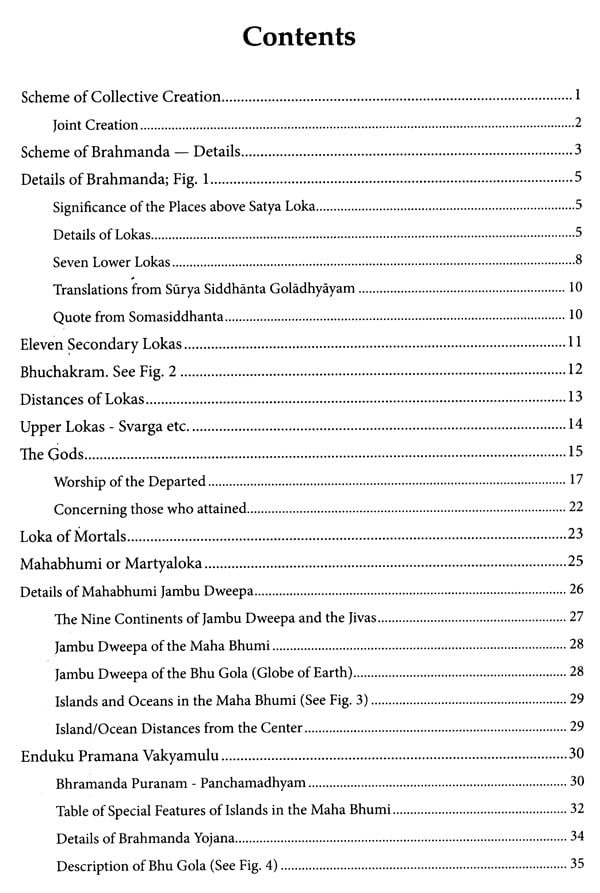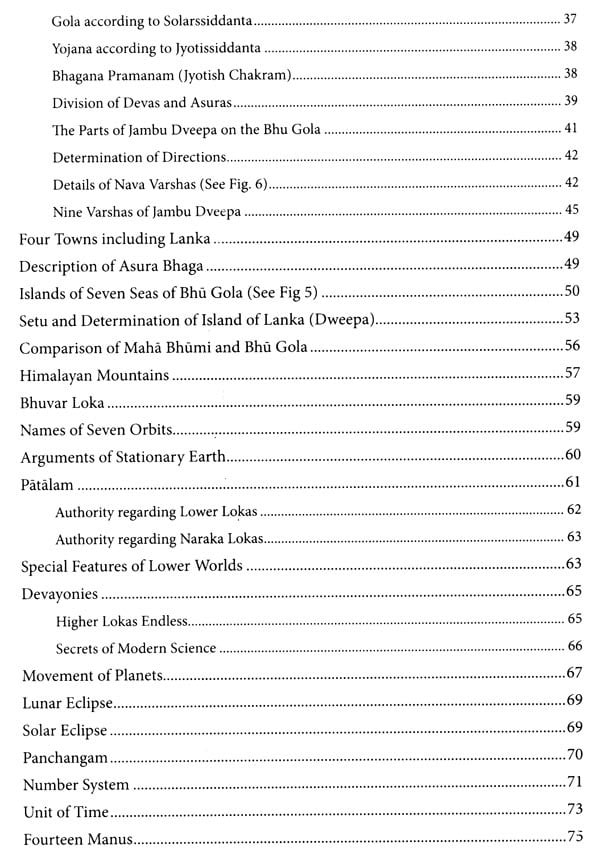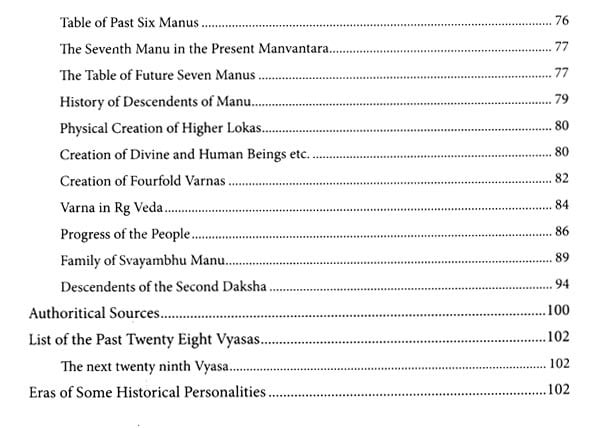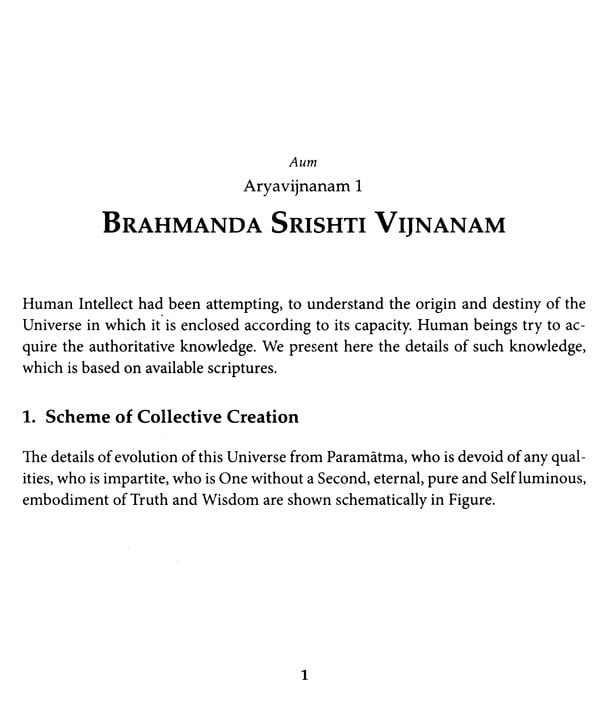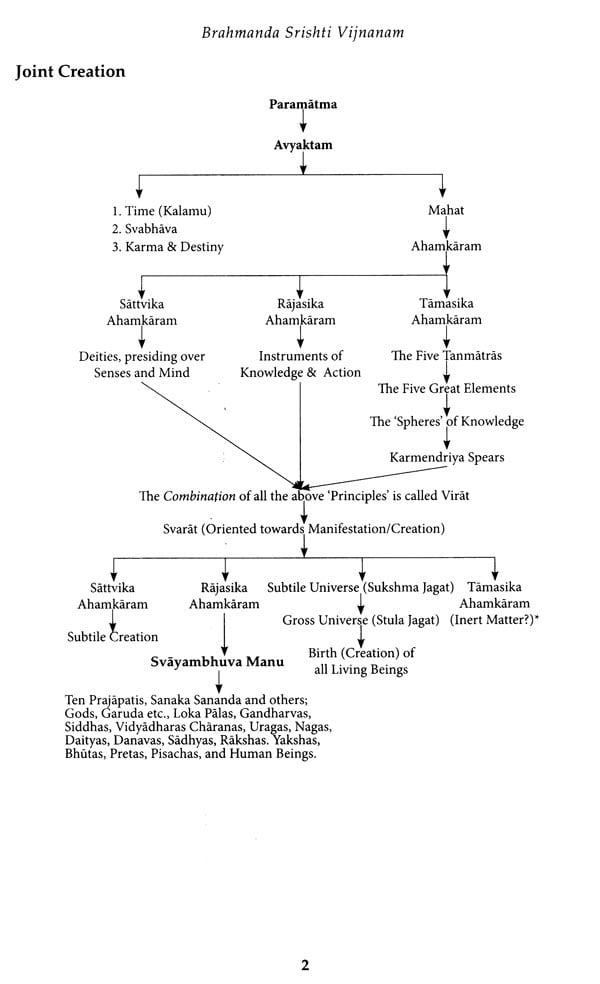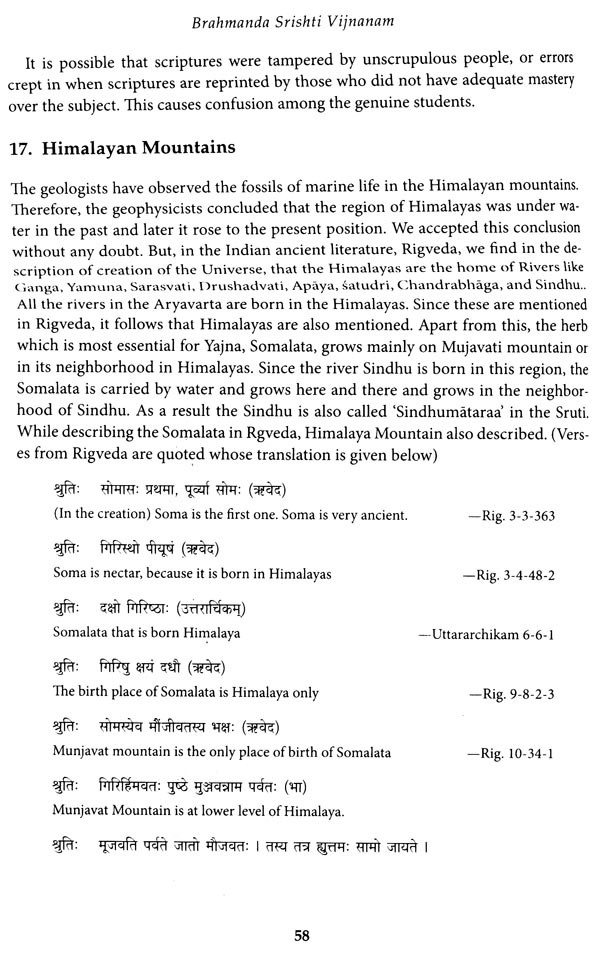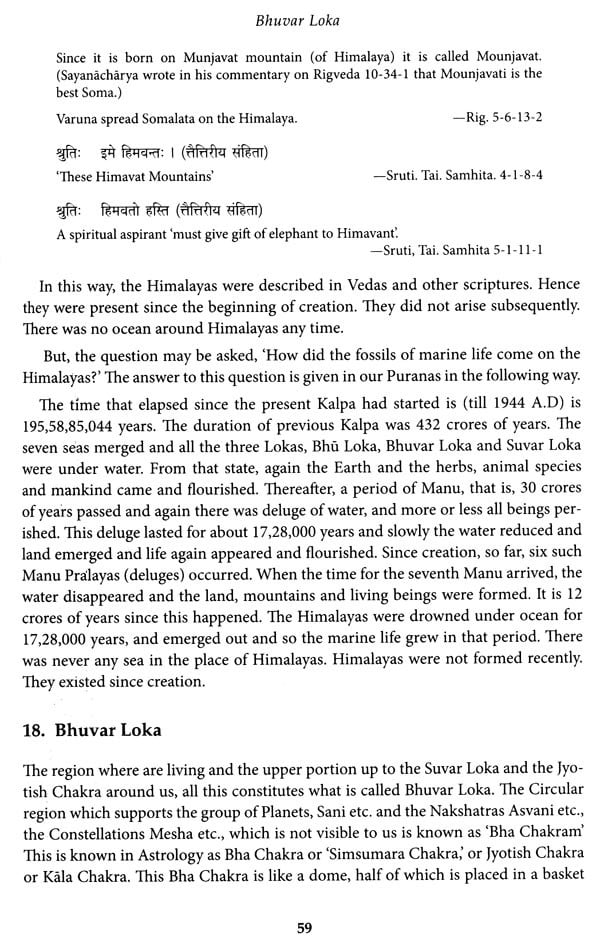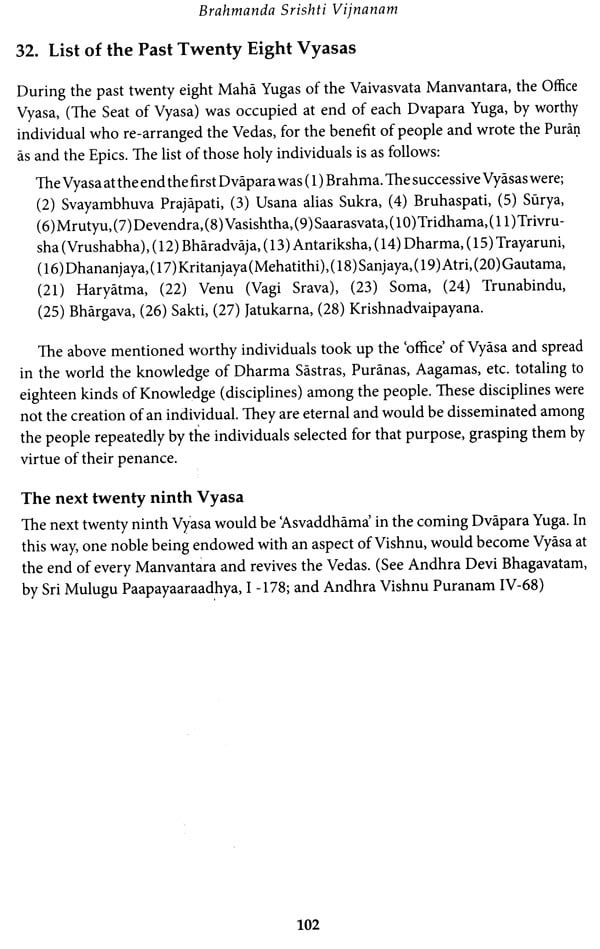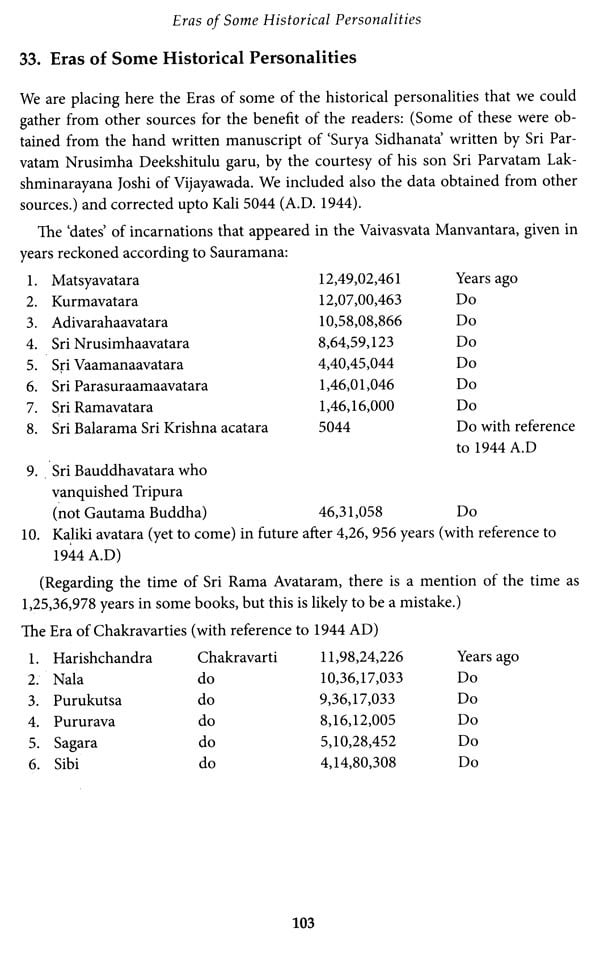
Brahmanda Srishti Vijnanam
Book Specification
| Item Code: | UAT189 |
| Author: | Kota Venkatachalam |
| Publisher: | ARSHA VIJNANA TRUST, HYDERABAD |
| Language: | English |
| Edition: | 2012 |
| Pages: | 136 |
| Cover: | PAPERBACK |
| Other Details | 8.50 X 5.50 inch |
| Weight | 220 gm |
Book Description
This book deals with the third aspect of the Universe-cosmography. Our sages called the Universe as Brahmanda. We live in this Brahmanda - the golden egg Under this subject, we have to study the seven upper worlds, the seven netherworlds. the Bhuloka consisting of seven dwipas and sub-divisions and the stellar region con sisting of planets, stars, constellations, including the pole star and the great mountain known as Maha Meru.
Sri Kota Venkatachalam, a Vedic scholar and a saint who participated in the national movement, is the author of two works Brahmanda Srusti Vijnanam, I Volume (in Telugu, now translated into English), and Manava Srusti Vijnanam, II Volume (in English). In the I Volume, he broke new ground and struck a special note. He based his conclusion on the strength of a Vedic hymn - Taitiriya Brahmana Kanda, Brahmanda Purana, Surya Siddhanta, and Siddhanta Siromani and stated his conclusions i. The entire Universe was in the form of water in which was found a lotus leaf supported by a long stem. Prajapati in the form of a boar dipped into the water and discovered the earth at the root of the stem. He picked up a small fragment of clay and spread it on the lotus leaf which is termed as Pruthvi ii. The earth that was placed on the leaf is the globe on which we live - Bhugola. The earth from which the wet clay was brought to make Bhugola is Mahabhumi. iii. The six dwipas and a portion of Jambu dwipa are in the Mahabumi and the Bhugola or the globe on which we live is only a portion of Jambu dwipa. iv. The Jambu dwipa which is the globe on which we live alone was divided into nine varshas, but these varshas subsequently got degraded during the course of time.
v. With reference to the measure of time of Manvantaras, we are in the seventh Manvantara known as Vaivasvata Manvantara. The Manu who is ruling the present Manvantara is in Bharat Khanda of Jambu dwipa a portion of Mahabumi, along with sages.
It was preferred by Gods at the epoch of creation of human beings. Svayambhuva Prajapati, who was created by the Will of Brahma, embarked on the task of giving suitable bodies to the Jivas who desired to come out of their hibernation from the Prakruti where they were bound by the fruits of past Actions. There was no Land at that time suitable for human beings The Bhu Gola was covered by Waters of the previ ous deluge. The Bho Gola has to be recovered to carry out work and so, Svayambhuva Prajapati prayed to Lord Vishnu and by the grace of Lord Vishnu, the Bhù Gola was reclaimed from the Waters, according to the several authoritative Vedic statements. (See Brahmanda Puranam, Prakria Padam, First Section).
Thereafter, Svayambhuva Prajapati assumed human form and incarnated on Earth along with his family from Swarga accompanied by nine sages - Atri. Vasistha. Kasyapa, etc., lived initially between Sarasvati and Drushadvati rivers. This place was known as Brahmavarta. (Refer to second part of Creation of Human Beings for de tails of Sarasvati and Drushadvati). It is called as Manu Kshetra even now. It is visited by devoted pilgrims, The number of individuals who descended from Svarga to Earth was sixteen, who were called by Gods as Aryas or Bharatas. The word Arya stands for Child of God. The descendents of Bharata, who was one of the sons of Svayambhuva Prajapati, are called Bharateeyas. The place they lived was called Bharata Varsha. Their descend ents spread over the whole Earth.
The time that elapsed from the birth of Svayambhuva Prajapati is 195,58,85,044 years (calculated upto 1944 A.D). The Vedas that were brought along with Creation were partly lost with passage of time, but we could retain through Smruties, Puranas, Epics some of the important features of the Past History. There are clear statements about the Aryans in these sources. By a study for prolonged period and one could understand the beginning and expansion of their culture. Admiring their culture, our predecessors protected their culture by following that tradition.
Due to some inadvertent causes, they were either forced to leave Aryavarta or by themselves left it. And they occupied different regions of Earth and did not adhere to their traditions. Thus, over a period of time, the Aryan traditions were forgotten and new traditions were freely adopted. They considered themselves not as Aryans.
**Contents and Sample Pages**
